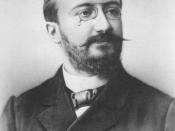When I was a schoolboy, my differences to my classmates always seemed to be big question marks for me. I was very good at mathematics, but very weak in sports. On the contrary, although my classmates often had low grades in maths, they were real footballers and athletes. Or I could hum all music pieces and songs I heard on TV or in tapes though I couldn't discern the lyrics of the songs, while my friends were able to tell you exactly what the singer was saying but had difficulty even in recognising the music parts. I wondered if, because of having good grades, I was an intelligent student, why I never learned how to pass or shoot accurately when playing football. In sports classes, that intelligent student was just a clumsy kid. Well, I wasn't the only one who thought of this sort of differences between people. Many scholars all over the world have thought of individual differences.
There were many assumptions and hypotheses about the factors which made people intellectually different from each other. But the first person who put forth an organised theory was Dr Howard Gardner. This well-known American cognitive psychologist gave a reasonable explanation for all questions regarding intelligence. He called his theory 'Multiple Intelligence (MI)'. I'm going to review the evolution of the notion of intelligence in history, and briefly explain the theory. Then I'll deal with the way educators utilised this theory in language teaching, and finally I'll mention some criticisms against the MI theory.
Before 20th century, the word intelligent all over the world even didn't have a precise meaning. People only knew that it's got a positive meaning. For example, individuals living in the West were called 'intelligent' if they were quick, articulate or wise. In other cultures, the...


